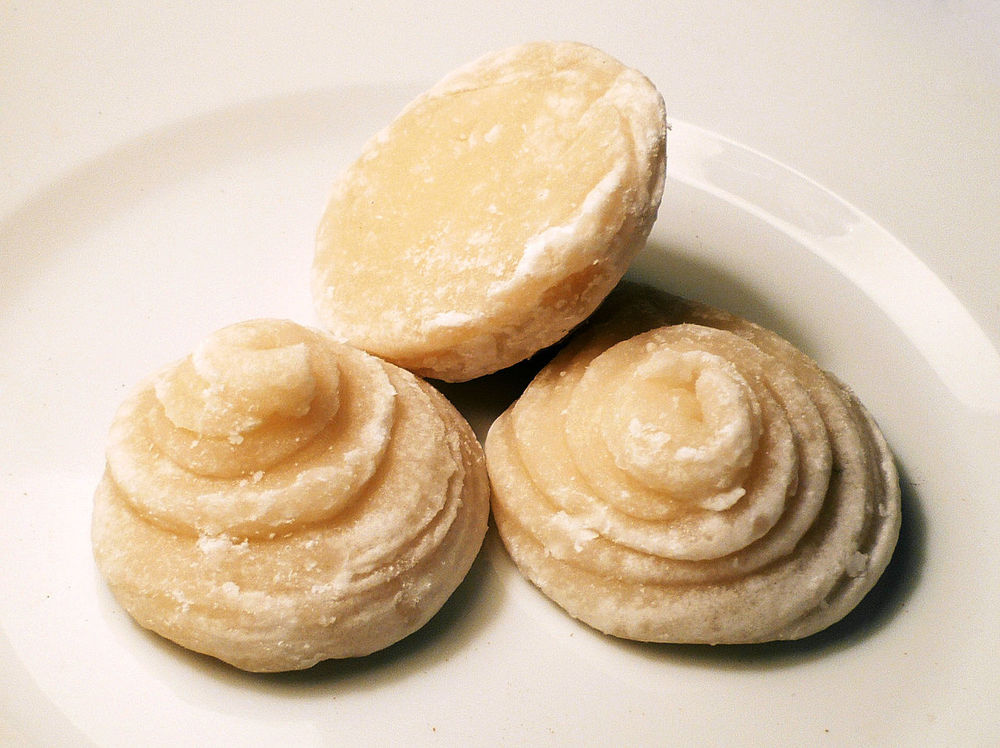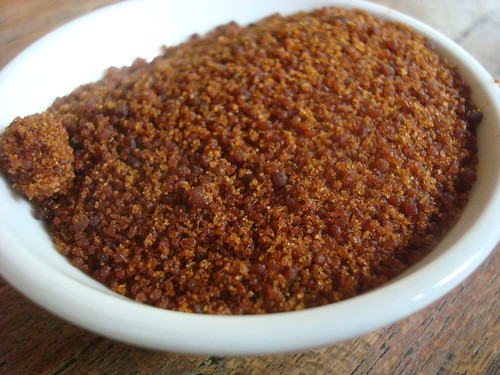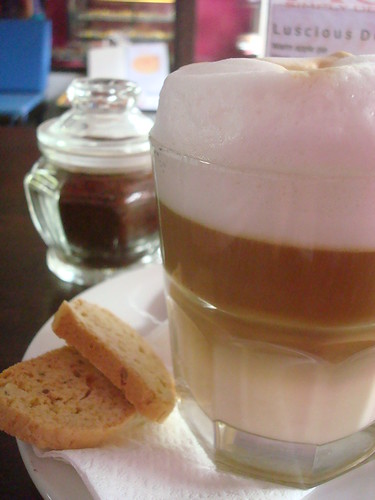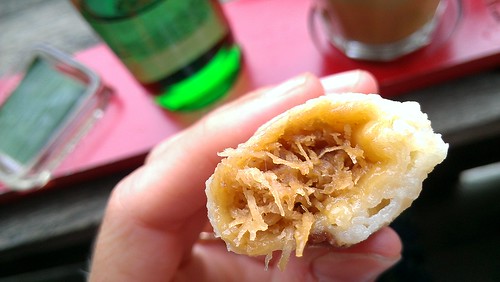When you go to Bali, you'll probably notice pretty quickly that the sugar is different there.
Personally, I noticed it the first time that I was brought a coffee in a cafe. They delivered it with a small dish of what looked like the darkest brown sugar I'd ever seen.
As I was looking at it, fascinated and slightly confused, someone who had been in Bali longer than me looked over knowingly. "Palm sugar," she said. "I never use refined sugar at home, but this doesn't seem to affect my blood sugar as much." (People in Bali, usually tourists, talk like this).
Palm sugar. Interesting. I started to notice that it was everywhere. See it behind that lovely (cookie-included) latte?
At some cafes, palm sugar was served as a simple syrup, which resembled pancake syrup. At others, in a dish, like my first experience. Interestingly, in stores and at open air markets, it was sold in thick, fat little cakes, sometimes dome-shaped, sometimes in cones. It was shaved or cut into portions, which reminded me of a story I'd heard about the early United States, wherein Colonial ladies of the house would have special shears specifically designed to cut sugar, which was at the time purchased as large cones.
So what is palm sugar, exactly?
Palm sugar is derived from the palmyra or sugar palm (and has a relative, coconut palm sugar, which is made from the coconut palm--so if you look it up, you may come across this term, too). Once cut, the flower buds produce a sweet yet very liquid sap; this sap is collected and boiled until it has reduced to a sticky sugar consistency. From that point, it can be either bottled as a liquid, or whipped and then dropped into molds so that it will solidify. Sound familiar? In my opinion, this process has quite a similarity to the process of making maple syrup or sugar.
Taste-wise, palm sugar is slightly mellower than granulated sugar, and in my opinion, has a flavor that is like molasses-meets-honey. It's very flavorful, and is a singular flavor when used simply, as in the coconut pancakes served at Seniman Coffee, where only a few ingredients allow every flavor to shine.
 Photo via Wikipedia commons
Photo via Wikipedia commons
Why are there so many variances in color?
Another thing I noticed is that palm sugar can have quite a large variance in color, from honey yellow to a deep, dark brown. Basically, this boils down to (ha ha) how long and how high the temperature was when the sap was reduced. As I observed, even the same brand or vendor would have no two portions of sugar that were completely "cookie cutter"--because this isn't a highly processed sugar, there is a little bit more variation from batch to batch.
At home, I found it easier to find the lighter colored palm sugar. Personally, I found the difference in flavor subtle; when using it in a dish that employs the sugar for sweetness in addition to other flavors, the type wasn't important. However, when using it in coffee or in a recipe where it is a primary flavor, the difference from light to dark palm sugar would be like the difference between light and dark brown sugar; the darker the sugar, the more caramelly and intense the flavor.
How to use palm sugar
To the best of my research, you can swap equal amounts of palm sugar for granulated or brown sugar. Because of its different density, however, for best results you will probably want to weigh your ingredients rather than packing in a cup. This is for baking, however; if you're using the palm sugar in coffee or to sweeten your oatmeal, say, just use to taste. Consider the recipe you're using, as the palm sugar will impart a flavor.
Is palm sugar healthier?
In Bali, a whole lot of people seemed to think so. Here's an article about it, if it interests you. I'll be honest, it only interests me marginally, as I don't necessarily think people eat sugar of any sort for its health benefits, anyway!
Have you ever used palm sugar in baking? I'd love to hear what you made and how it came out.
Love from Bali,
CakeSpy



